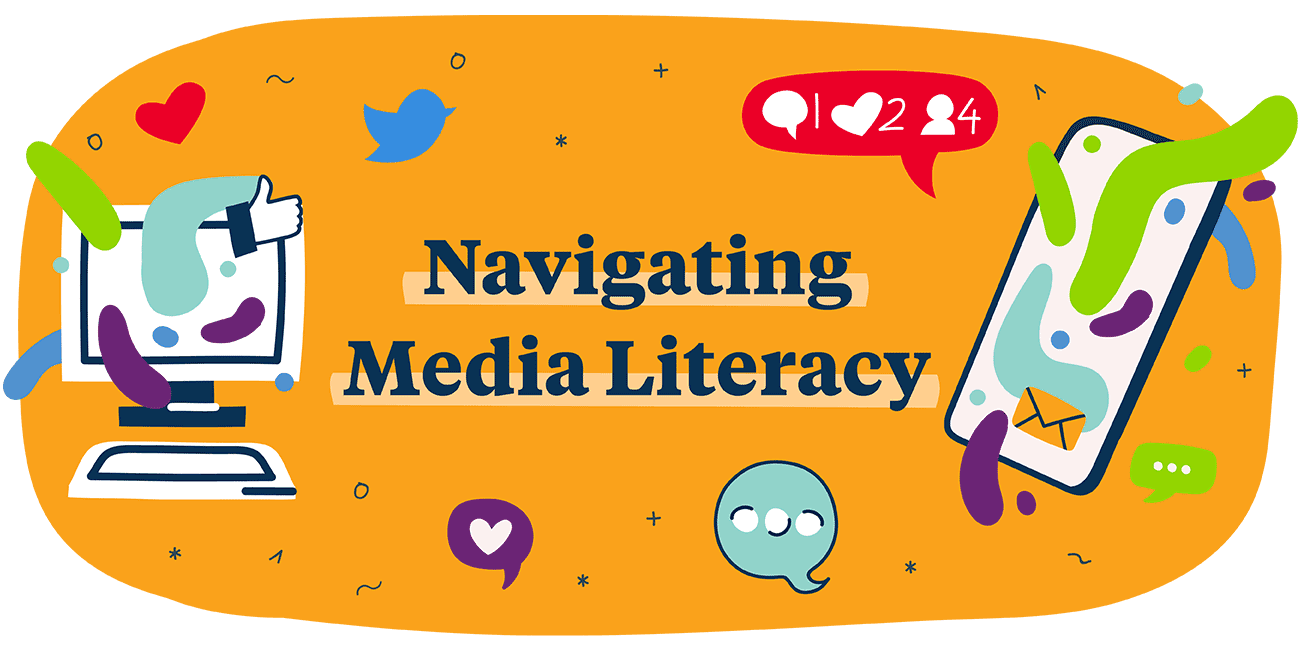Today we can watch the news on television, listen on the radio, use an app or website, or even read a newspaper. Not all media is news, but all news is delivered through some form of media. Think for a minute about how you gather news and information and consider how that might be different for your students. Tweens and teens use social media to access news more often than those over eighteen years old. A 2020 report by Media Technology Monitor (MTM) showed that 72 percent of Canadian teens use social media. As students become more savvy digital consumers, social platforms don’t have to be a bad place to get news and information.
We must teach our students to be smart consumers of the information they gather. How students react to media, engage with media, and are influenced by media should be analyzed and considered as they filter information and news. The Ontario Ministry of Education has defined media literacy and notes the importance of teaching students about how media works. The Media Literacy Resource Guide published by the ministry states that there are five principles of media literacy. Navigating the variety of available media streams starts with understanding that media was created for a specific purpose. Knowing that “all media are constructions,” that there are commercial agendas behind the media, and the underlying goal of the media is to present information as reality, are important ideas our students must be aware of.
Media Literacy is concerned with helping students develop an informed and critical understanding of the nature of mass media, the techniques used by them and the impact of these techniques. More specifically, it is education that aims to increase students’ understanding and enjoyment of how the media work, how they produce meaning, how they are organized, and how they construct reality. Media literacy also aims to provide students with the ability to create media products.” – Ontario Ministry of Education
We know students are exposed to all kinds of media and ideas, so how do we teach students to critically examine the information they gather? We must start with identifying the role of media in our society, the ways media shapes how we see the world, and how it influences our perspectives and decisions. Our students need to be exposed to the subtle (and not so subtle) ways they are being influenced, understanding the difference between being persuaded and being informed.
There are many great resources that exist to teach students about media. Media Smarts has a wealth of resources for teachers including lesson plans, workshops, and games to incorporate an understanding of media into your classroom. The US-based ‘Crash Course’ series on YouTube has twelve episodes on media literacy that cover topics ranging from persuasion, economics, and advertising.
Recent data shows that more money was spent on social media advertising globally than any other media platform. Likewise, statistics published in June 2022 show that spending on internet advertising in Canada continues to skyrocket. The ad revenue doubled from 2015 to 2020 and showed a 28 percent increase from 2020 to 2021. These statistics are very telling about how well targeting social media users is working for advertisers and suggests an increasing need to empower students with the ability to decipher the information they consume.
We expect that our students will use media when learning and researching new topics, which is why it is critical that they know how to evaluate media. There are lots of ideas about how to best analyze and vet sources where we gather information. Most agree on the same basic principles and questions to ask when considering the validity and the message presented. Students must learn to question: 1) the authors and their intended audience, 2) the messages and techniques used to share the information, and 3) the accuracy and creditability of the information.
The Modern Language Association (MLA) published a checklist for evaluating sources and also an accompanying lesson plan to use with students that can be easily adjusted for a Canadian student audience. The Association for Media Literacy (AML) is another great organization that caters to helping teachers expose their students to these ideas. Their teacher resources page has lesson plans on topics ranging from misleading information, cultural perceptions in the media and using current events as learning opportunities for students.
The role of all educators is not to indoctrinate but to facilitate learning and understanding. We want our students to understand how to gather information for themselves and make meaning of it rather than telling them what to think. Teachers can embrace the fact that students are on social media while, leaning into the opportunity to guide them as they navigate the many types of media and learn to use it as a positive tool in the classroom. Ask students to respond with a tweet, to create a mock Instagram campaign, or to retell history to modern music with a TikTok video. Dive into the many ways you can use social media to enhance your classroom experience while simultaneously infusing ways for students to strengthen their critical thinking muscles in your teaching.
The best thing teachers can do is model what it looks like to be a life-long learner. We can ask questions that help students reflect, stay informed, and require students to support their opinions and ideas with facts and reasoning. We must not only ensure that students are taught the importance of seeing topics from multiple perspectives, but we must also provide them with the tools to evaluate the variety of sources they’ll encounter.
Written by: Carrie Weber

Carrie Weber serves as a Senior Curriculum and Academics Specialist for WorldStrides. She holds an M. Ed. in Secondary Science Education and a BS in Physics. Ms. Weber earned a STEM Leadership certificate through the NASA Endeavor program and has recently completed coursework on anti-racist education. She taught middle and high school science in the traditional classroom for 14 years, is certified and licensed in several states, and holds multiple College Board AP certifications.

